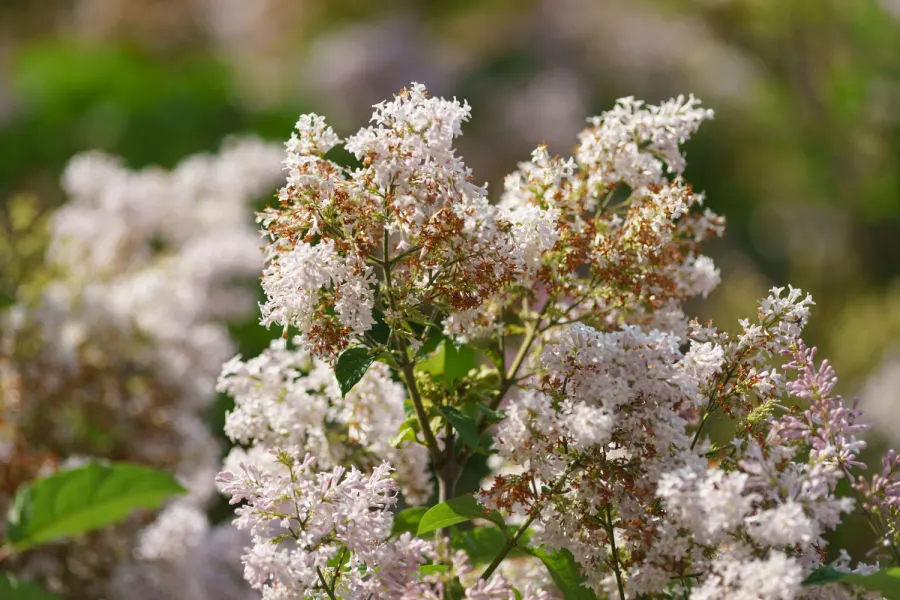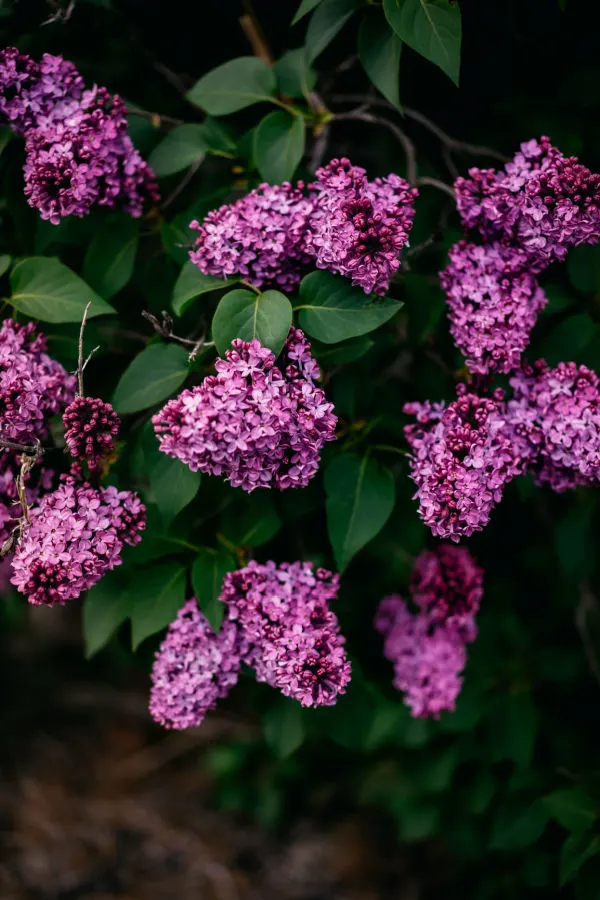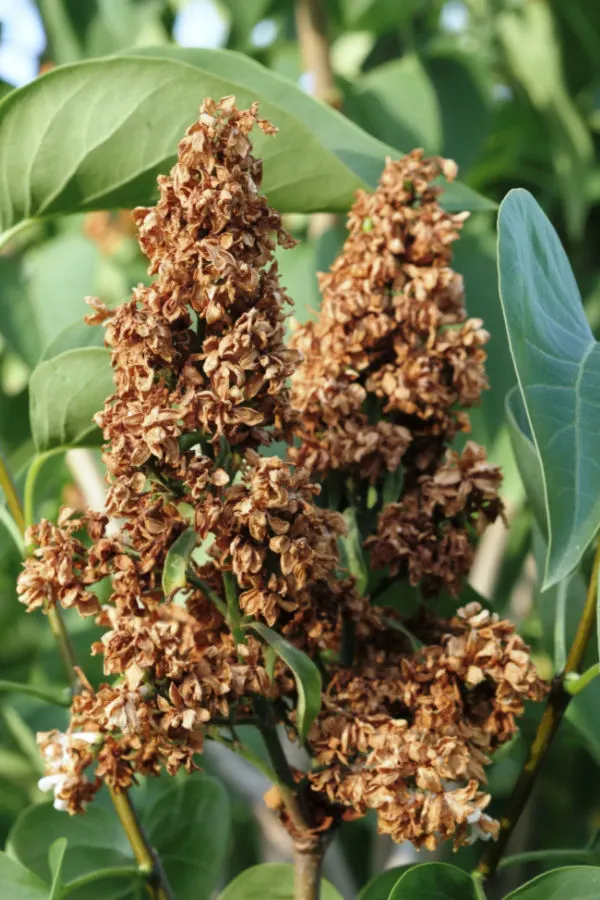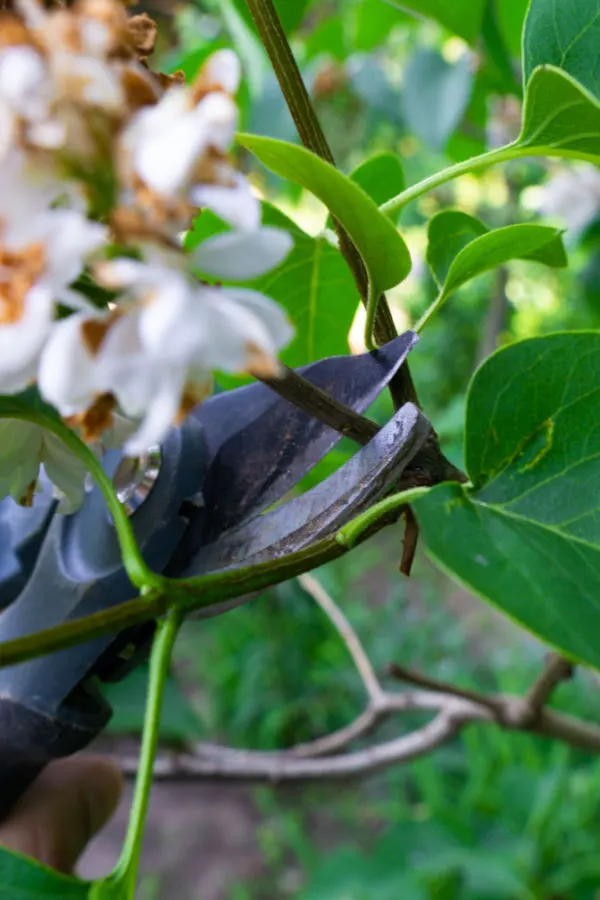Did you know that one of the most important times to care for your lilac bush is right as it finishes flowering in late spring? In fact, what you do with your bushes right after they bloom can actually make a huge difference in just how well they flower next year – or whether they bloom at all!
Lilac bushes are one of the most popular bushes of all – and it’s easy to see why. Their vibrant, colorful blooms are one of the first of all bushes to enjoy each spring. And when they do bloom, they fill the landscape with unmatched beauty and sensational floral scents.
Lilac bushes can be found in all shapes and sizes. There are dwarf varieties that top out at a total height of just five to six feet tall and equally wide. Meanwhile, more standard lilac bushes can grow much taller, climbing to 15 feet tall and wide or more at full maturity.

Although their are a few lilac varieties that flower in mid to late summer, it is the spring flowering types that are by far the most commonly grown. And when it comes to caring for spring blooming lilacs, the most critical time for helping them is right as their flowers begin to fade in late spring!
How To Care For Lilacs After They Flower
#1 Prune Your Bushes At The Right Time – How To Care For Lilacs After They Flower
One of the most important chores of all to perform after your lilacs stop blooming is pruning. And, as you will see below, not just pruning for shape and control, but to remove as many of the old blooms as possible from the bush.
Let’s first cover why it’s critical to only prune right after they bloom. Lilacs form new blooms on the branches and stems that grow new wood after they finish blooming. That means whatever growth that occurs from mid to late spring until late fall will contain the following spring’s blooms.
Unfortunately, if you don’t prune the bushes before they begin to grow new wood – you risk removing future blooms by trimming them off with a late summer or fall pruning. The same is true for winter or early spring pruning. Removing any branches either of these points removes the buds that will bloom in spring.

So what is the best way to prune back the bush right after it blooms? For bigger and better blooms next year, it’s actually a two part process. And it all starts with deadheading as many of the spent blooms as you can from the plant.
Removing Dying Blooms – How To Care For Lilacs After They Flower
Lilacs need energy to flower. And a lot of it. The fact is, the more energy lilac bushes can conserve to use for future blooms, the better. And by removing decaying blooms from the plant, you can help your lilac bush do just that!
When a fading bloom remains on a lilac bush, it continues to spend energy and nutrients on trying to “fix” or heal it. Unfortunately, the more old blooms that remain on a bush as it stops flowering, the more energy the bush burns.
But if old flowers are removed early on as they begin to fade, all of that energy is saved. And best of all, it can be used instead for growing new wood and blooms for next year. See: The Power Of Deadheading Annuals & Perennials

To give your lilacs the best possible chance for better blooming next year, remove any and all blooms as they fade. If your lilac is overly large, it is still helpful to remove as many old flowers as possible. Even if you can’t get them all, removing the majority will save big resources for the bush.
For small bushes, a hand pruner works well to take off old blooms. But the best method for removing lilac blooms from larger bushes is with a pair of shrub pruners or electric hedge trimmers. They will quickly cut the blooms off and are far better than trying to use hand pruners individually!
Major Pruning – How To Care For Lilacs After They Flower
As lilacs finish blooming, this is also the time to do any major pruning to your bushes. You should prune your lilac bushes every season at least a little to maintain their shape and to prevent too much growth. However, it is extremely important do this chore right after flowering to allow new wood to grow for blooms.
The good news is that lilacs can handle major pruning with ease. In fact, if your bush is out of control, you can cut it all the way back. Even to just a foot or two in height. A major pruning is a great way to help rejuvenate old plants. It will slow the blooms for the first year after, but long-term, it will bring more than ever.

Fertilizing Lilacs – How To Care For Lilacs After They Flower
Although pruning off old flowers and any overgrowth is good for lilacs after they finish blooming, fertilizing your bushes at this point is not.
Lilacs bushes struggle more from over-fertilizing than they do from a lack of nutrients. When the soil is too fertile, or too many nutrients have been added via fertilization after they bloom, it can cause the bush to put all of its energy into growing foliage.
When the bush does this, it comes at the expense of future blooms. Instead of storing energy, it simply tries to grow a bigger canopy of foliage. Because of this, you never want to fertilize your lilacs anytime from mid-summer through late fall.
Fertilizing Lilacs For Success – A Little Goes A Long Way
Lilac bushes can benefit from a little energy in late winter or early spring, just before they begin to bud out. At this point, the bush can use the extra nutrients to help it leaf out and energize blooms.

The key again here is to apply a low dose. One of the best methods for fertilizing lilacs is to top dress the soil underneath early each spring with a few inches of compost. Compost is filled with nutrients, but releases them slowly into the soil at a rate that is perfect for lilacs.
As an alternative, you can also apply a light coat of 5-10-5 all purpose fertilizer in late winter or early spring to help boost the blooms. Again, less is more when it comes to lilacs and their blooms.
Here is to giving the best care possible to your lilacs after they bloom this year – and to more blooms than ever next year!
Follow Our Facebook Page For Even More Great Tips! Simple Garden Life Facebook Page
Simple Garden Life is a website dedicated to keeping gardening fun, simple and enjoyable! We publish two new articles each week along with a new garden podcast episode every two weeks. This article may contain affiliate links.
